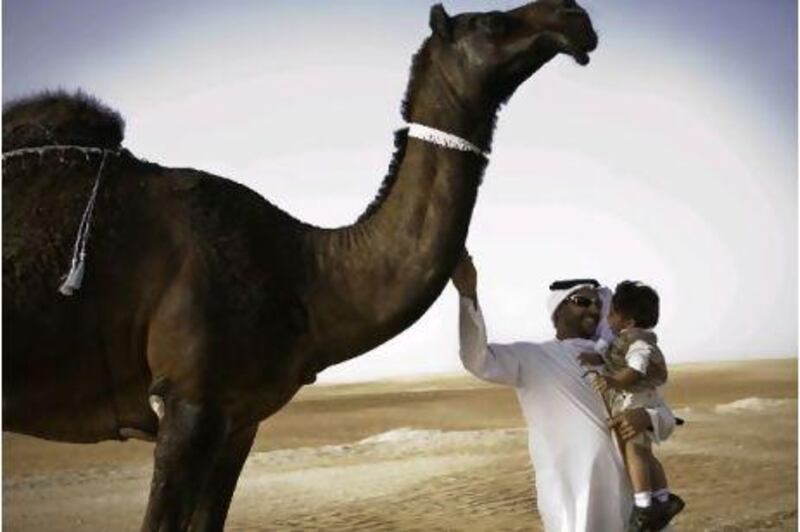AL GHARBIA // Stories of the desert and its heritage are often carried forward from generation to generation, usually narrated by the older members of the tribe to the young. Now, in a modern twist, this tale will be told with a 3D film in Arabic and English.
Inspired by the Al Dhafra Festival, the 30-minute film will tell the tale of desert culture and its affinity with camels.
Sheikh Diab bin Saif Al Nahyan, a camel lover and the financier of the documentary, hopes the film inspires tourists worldwide to come and experience not just the glitz of big cities such as Dubai, but the true desert heritage of the Gulf.
"I want this 3D movie to show the world what Dhafra Festival is," said Sheikh Diab. For example, one facet of the film will show how breeders prepare their camels for the beauty pageant and walks the audience through the judging.
A UAE-based company has joined 3D Camera Company, a Canadian film production company, to make the documentary. They are taking six days to film not only the camels but also the folk dances of the desert, handcrafts and the festival's traditional souk. "We're trying to show the beauty of the region, to attract world attention to the culture," said William White of 3D. "[And] the mystical wonder of the camel itself - their magical personalities and the demeanour of a camel that has inspired history over many, many centuries."
The festival has been documented in film before, but a 3D movie "provides an immersing experience of the camel festival for audiences worldwide", said Hagan Carlile, the co-producer. "3D allows us to put the audience in the middle of the action and transport people to an epic event that celebrates a rich history with this extraordinary animal."
Setting up any 3D shot takes twice as long as a set piece in a regular film, and working with camels requires further ingenuity, since the animals do not always follow stage directions to the letter. "The younger camels lead the older," Mr Carlile said. Over time, older camels develop a maternal bond and follow the young ones to protect them.
"We've discovered the personalities of camels are quite amazing," he said.
The filmmakers must also improvise techniques to overcome the technical issues in the desert.
"The desert is a very harsh environment for sensitive equipment and we have to be doubly vigilant to protect the 3D cameras from the sand, dust, overheating and moisture condensation," said Mr Carlile. "Ensuring the integrity of the data is very important, as any [dirt] in either of the two separate images can destroy the 3D effect."
At the end of the shoot, the producers will have 150 hours of digital footage that must be edited to 30 minutes, while still telling a coherent story.
The painstaking process can prove to be fruitful, the producers said, because 3D films can earn twice the revenue of regular movies.






